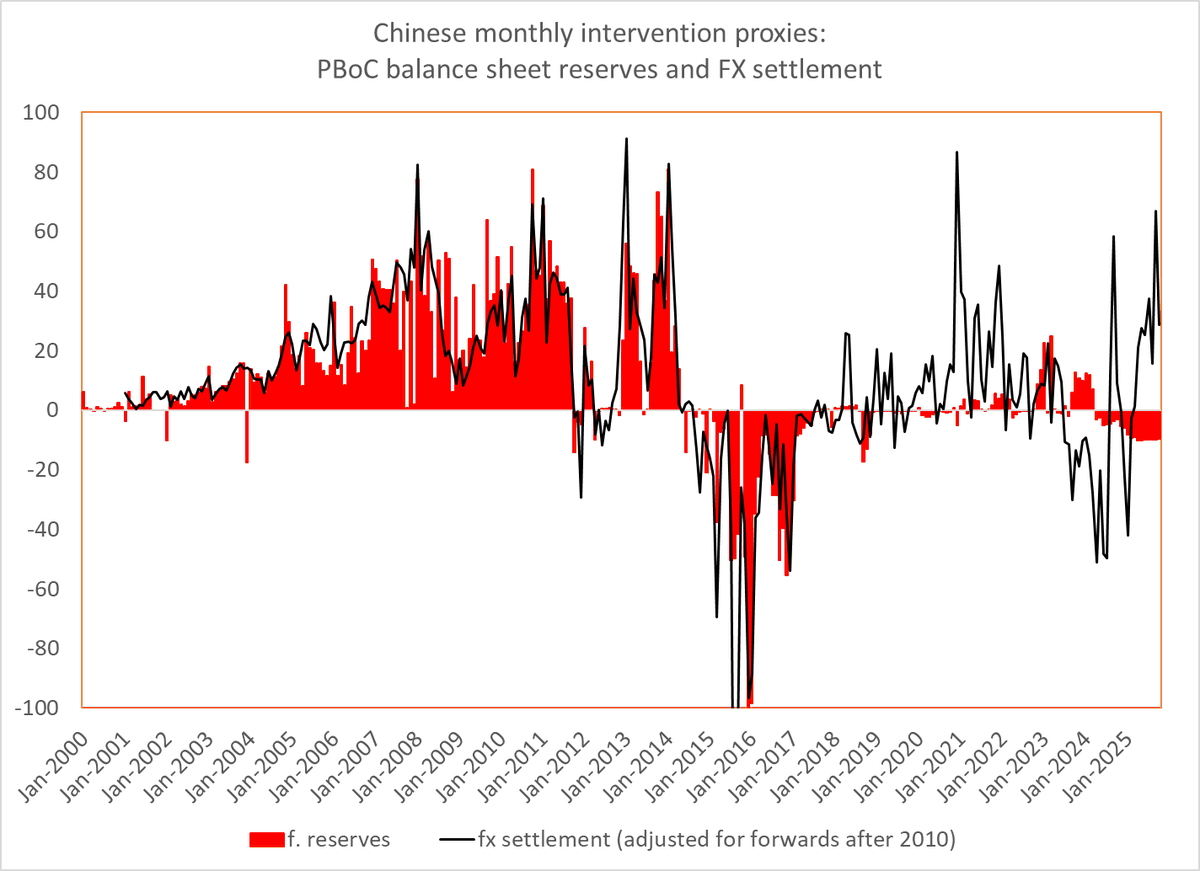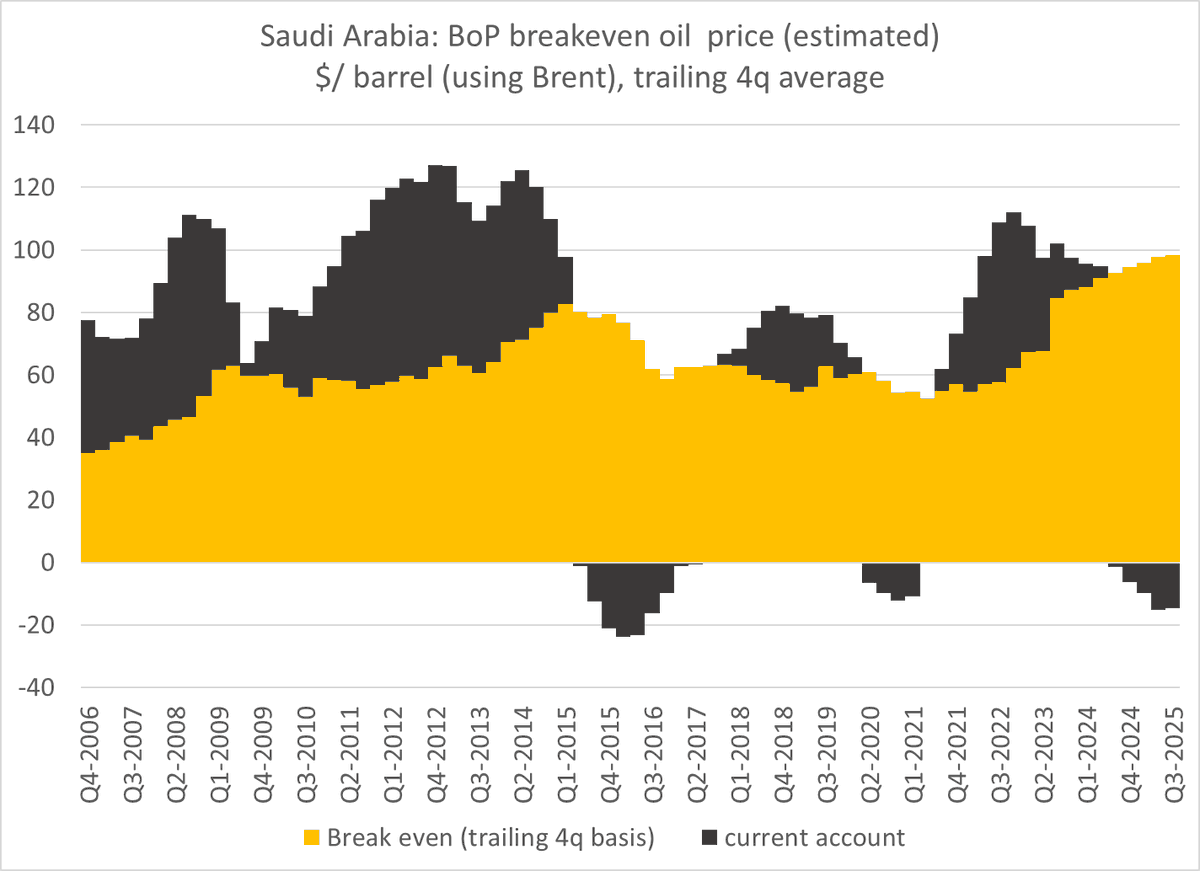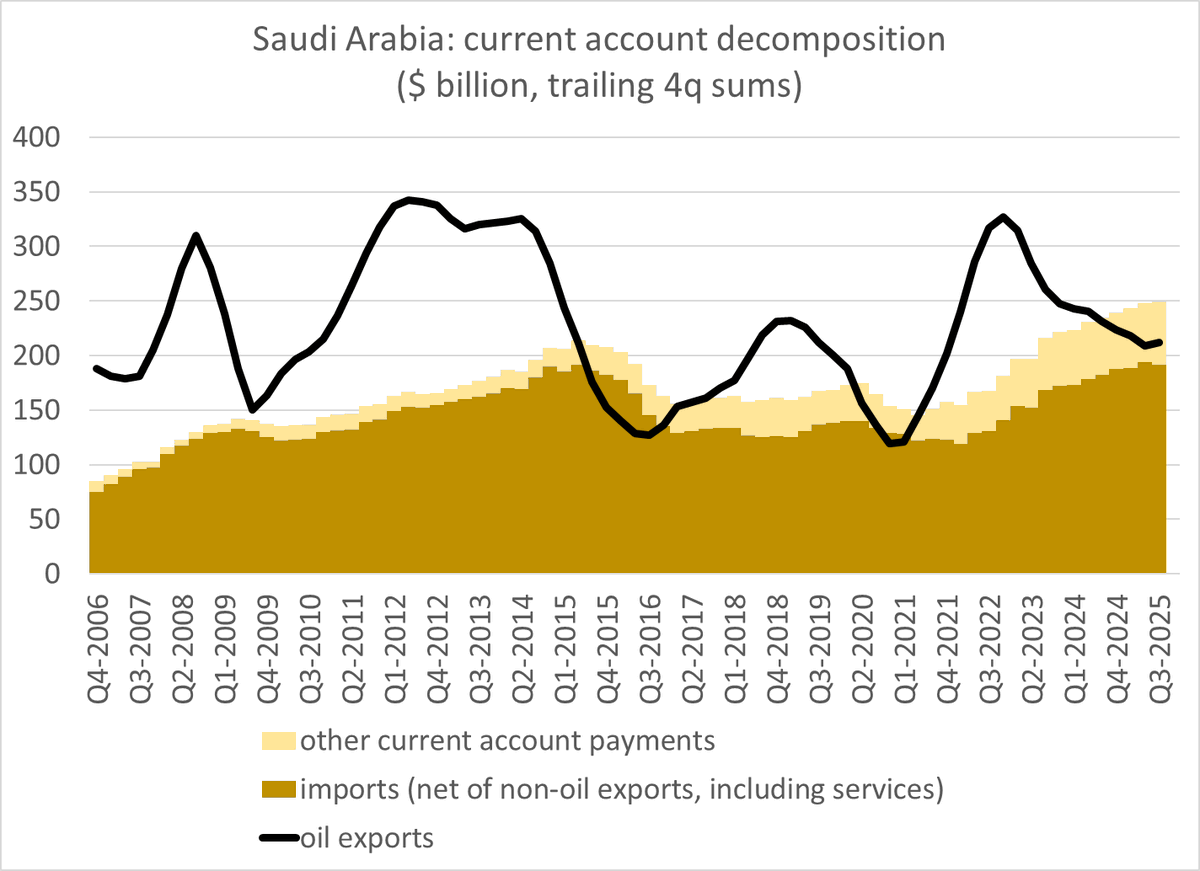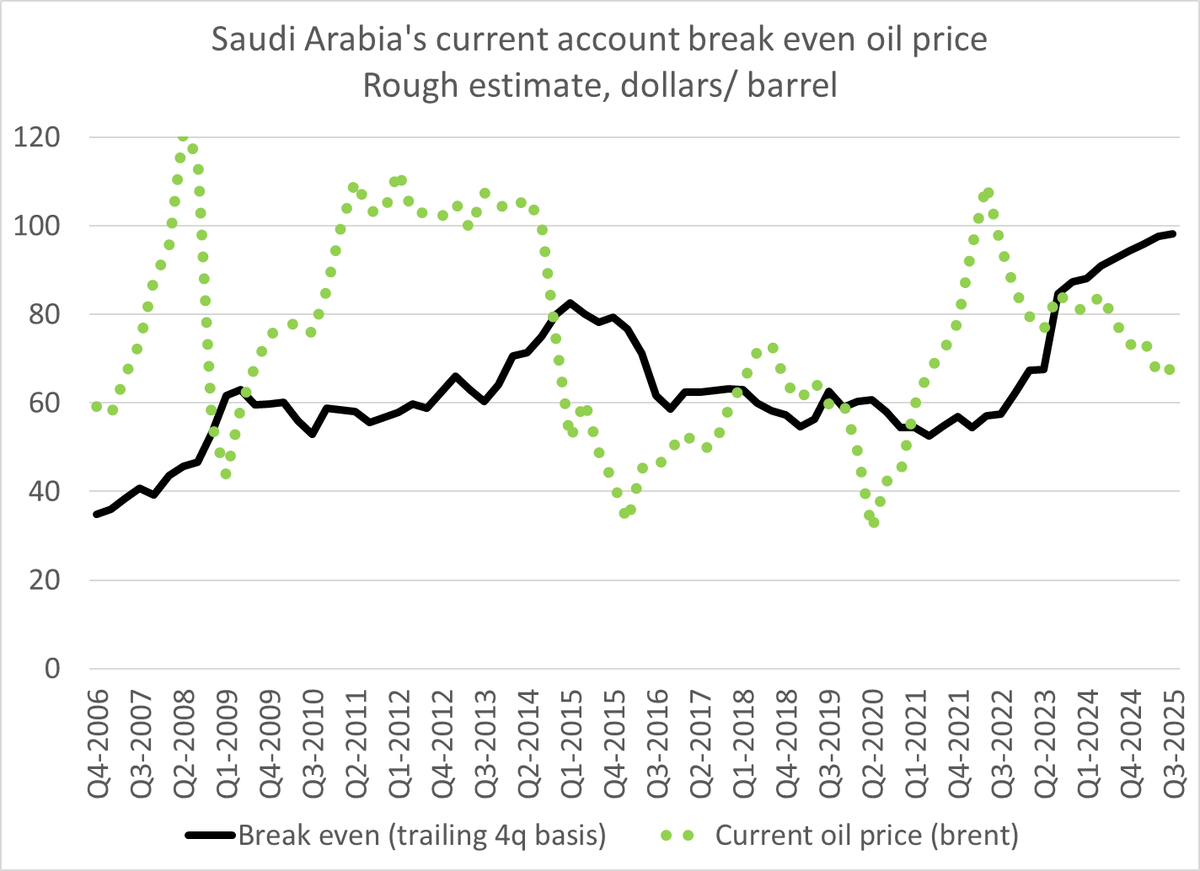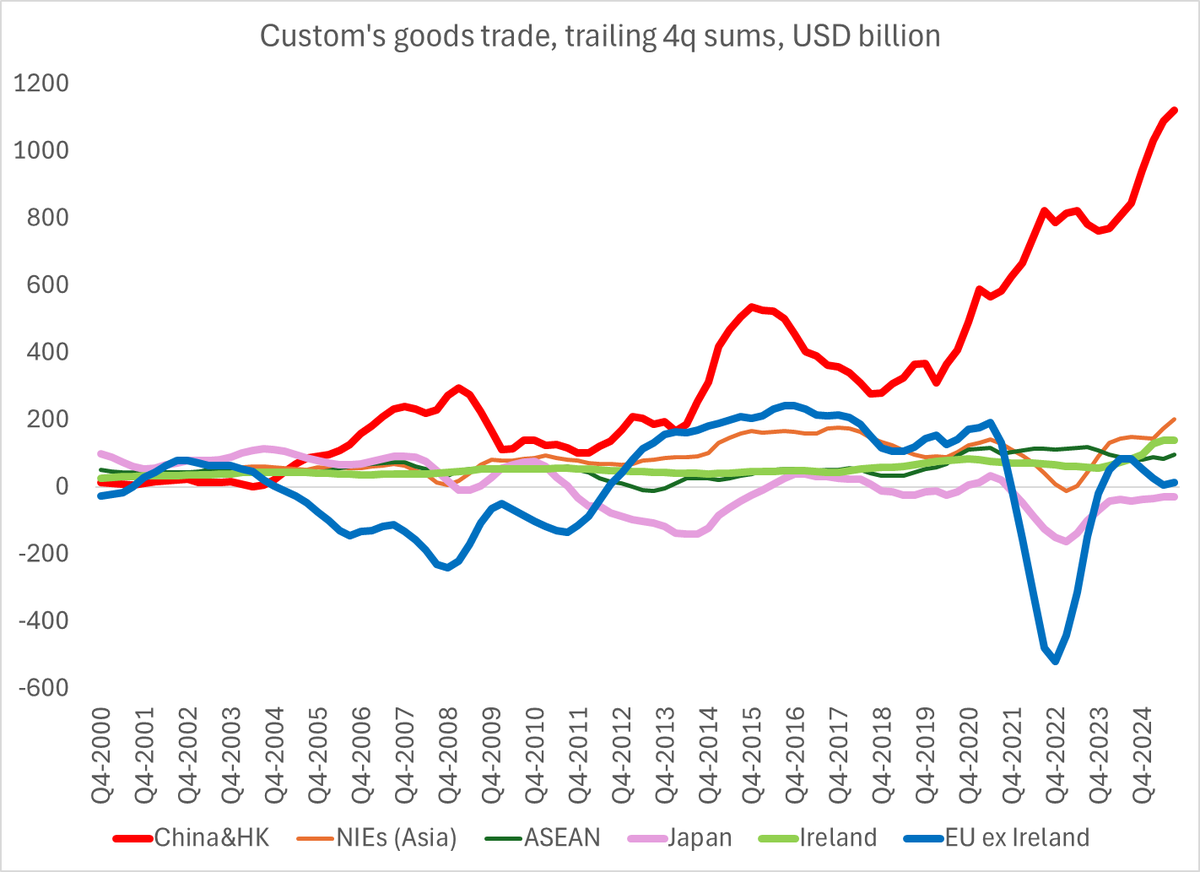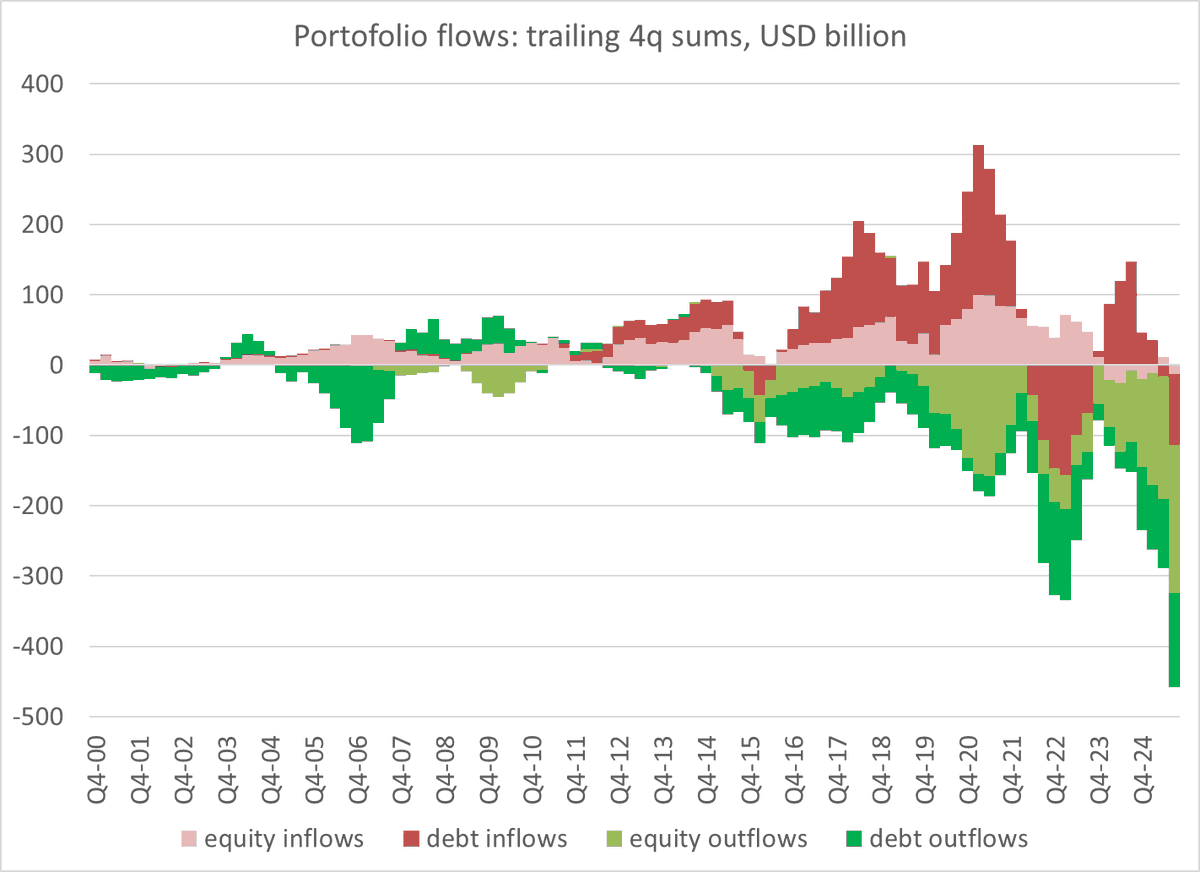Perhaps the most boring chart in the world
The shares of the major currencies in global reserves, as reported to the IMF.
1/
The shares of the major currencies in global reserves, as reported to the IMF.
1/

The dollar's weight in global reserves is roughly 3 times the United States weight in the global economy (maybe a bit less0; the euro's weight is close to its weight in the global economy -- and China still punches way below its weight, for obvious reasons!
2/
2/
A far more interesting chart showing global reserves --
The big, interesting important story isn't shifts in share ... but the huge increase in reserve holdings from 02 to 14, and the subsequent reduction in the pace of accumulation.
3/
The big, interesting important story isn't shifts in share ... but the huge increase in reserve holdings from 02 to 14, and the subsequent reduction in the pace of accumulation.
3/

A technically demanding global reserves chart -- one showing actual flows (purchases + retained interest income) by currency.
The bond market adjustment complicates everything; I don't yet have a good bond market adjustment for the euro.
4/
The bond market adjustment complicates everything; I don't yet have a good bond market adjustment for the euro.
4/

China's reserve sales in 15-16 obviously figure heavily in that chart ...
and there was a quite large pickup in reserve accumulation in 2020-21 that we now tend to forget.
5/
and there was a quite large pickup in reserve accumulation in 2020-21 that we now tend to forget.
5/

And some of the most interesting stories told by the reserves data have nothing to do with China --
For example, EM Asia sold a lot of reserves last summer and fall, in what I think was a successful defense against an overshot of their currencies when oil was high!
6/
For example, EM Asia sold a lot of reserves last summer and fall, in what I think was a successful defense against an overshot of their currencies when oil was high!
6/

And, as I have noted many times and in many different ways, looking only at formal reserves misses much of the picture these days -- China has as much money in state banks, its policy banks and state investment funds as it holds in its formal reserves ...
7/7
7/7

• • •
Missing some Tweet in this thread? You can try to
force a refresh





